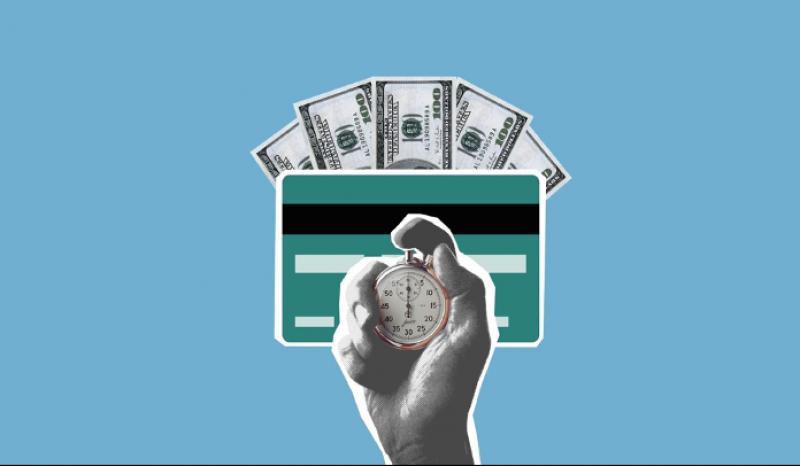Good Service, Good Business with DSCR Loan Program
The Debt Service Coverage Ratio, short for DSCR, is a financial health indicator for a corporation. Small businesses must comprehend their finances to understand how to calculate DSCR fully.
Having a background in this service may help a company determine how much debt it can afford to pay. Further, the DSCR Loan Program can help you better understand your finances and make more informed operational decisions that will benefit your company.
Take note as we start with understanding the basic principles of Debt Service Coverage Ratio and why it is essential.

The Fundamentals of the DSCR Loan Program
This ratio calculates the net operating income sufficient to pay down short-term debt. A DSCR is a valuable metric for determining a person's or a company's ability to pay off debts in cash.
If the ratio is high, it shows that the company is more creditworthy because it has sufficient financial resources to meet the obligations associated with its debt, such as paying the necessary payments on time.
This ratio mortgage program is designed for experienced investors needing a low-documentation program without the hard money interest rates and terms.
When you request an appraisal, a certified appraiser will complete a regular residential appraisal report and a secondary report called a Market Rental Analysis, which will show you the typical market rent for similar houses in the region.
For a variety of reasons, the DSCR loan program is appealing. First, repayment capacity is dependent on property revenue rather than employment income, as with a traditional mortgage.
These loans suit investors who may not always get a continuous wage, think business owners, self-employed, and retirees.
Importance of Debt-Service Coverage Ratio
When corporations and banks negotiate loan arrangements, a DSCR is a regularly utilized indicator. For example, a company seeking a line of credit could be required to maintain a DSCR of at least 1.25.
If this happens, the borrower may be found to default on the loan. DSCRs may assist analysts and investors in evaluating a company's financial soundness and assist banks in managing their risks.
The industry, competition, and stage of growth all influence the DSCR. For instance, a smaller firm starting to produce cash flow may have lower DSCR expectations than a mature, well-established corporation.
A DSCR of more than 1.25 is commonly regarded as "strong," but a ratio of less than 1.00 may suggest that the firm is having financial issues.
A debt service coverage loan adds to your understanding of your company's financial health, which is always beneficial.
However, it is also critical to understand and analyze your company's debt-service coverage ratio since it significantly impacts your capacity to get business financings, such as commercial lines of credit and other credit instruments.

Pros and Cons of Debt Service Coverage Ratio
Weighing the benefits and drawbacks can help you make a faster choice, better understand the issue, and avoid decision paralysis. Knowing the DSCR loan pros and cons will help you approach your decision objectively.
Benefits of DSCR Loans
DSCR Loan Program gives real estate investors much freedom when financing their projects. Here are the top three advantages of DSCR loans to consider.
Lenders Ignore Personal Income
One of the significant benefits of a DSCR loan is that it does not need job verification, the disclosure of any leases, or the presentation of evidence of income. Instead, the lender is only concerned with the subject property's cash flow.
Quicker Closing Times With DSCR Loans
While loan processors and underwriters generally analyze your paystubs and complete job history background checks, the DSCR skips these processes. In comparison to commercial loans, this results in a speedier closing.
You Can Commit to Many Properties at the Same Time
Some loans require you to commit to a specific property just once. You will not be able to receive a loan for a second home until the first is paid off. That is not the case with DSCR loans.
To expand your business faster, you might simultaneously take out many DSCR investor loans for different properties.
Drawbacks of DSCR Loans
DSCR loans have a lot of flexibility, but there are certain drawbacks to consider before deciding.
Terms
Depending on the lender, the required down payment might range between 20% and 25%. You will also have to pay lender and service costs, ranging from 0.5 percent to 1% of the total loan amount.
Rates on DSCR mortgages usually are 1.000% to 2.000% higher than rates on standard loans. The interest rate may be greater if the property has no lease and the expected rental revenue is based on an appraisal report.
Financing is Limited
DSCR rates and conditions are comparable to other loans, although they offer less funding. A debt service coverage loan may not be the ideal solution if you want more than $5,000,000.
Calculating the Debt Service Coverage Ratio
The debt-service coverage ratio formula is all you need to calculate your debt-service coverage ratio.
DSCR= Annual Net Operating Income / Annual Debt Service
A decimal is used to represent a debt-service coverage ratio. A firm with $250,000 net operating income and $200,000 debt service has a debt-service coverage ratio of 1.25.
In other words, this hypothetical company can pay 125 percent of its obligations under present operational conditions, leaving some breathing room in case things change.
Let us look at the statistics the other way around. A company with $200,000 in net operating income and $250,000 in debt payment has a total debt-service coverage ratio of 0.80, much below the minimum of 1.00.
As it is, this company can only pay 80% of its debts, which may raise red flags with lenders.
Photo by Karolina Grabowska. Source
Utilizing Excel to Calculate DSCR
You cannot just divide net operating income by debt service to get a dynamic DSCR calculation in Excel.
Instead, you would label two consecutive cells, A2 and A3, "net operating income" and "debt service," and then insert the appropriate amounts from the income statement adjacent to those cells in B2 and B3.
Enter a DSCR formula in a separate box that utilizes the B2 and B3 fields instead of absolute values.
Nonetheless, a dynamic formula that can be modified and redone automatically is preferable for basic computation.
Particular Considerations
The interest coverage ratio does not expressly consider the firm's capacity to repay its loans. Most long-term debt problems have amortization clauses with monetary amounts equivalent to the interest needed.
Failing to satisfy the sinking fund demand is a default that can lead to bankruptcy. The fixed charge coverage ratio is a statistic that aims to gauge a company's repayment potential. Check out https://mortgage.shop/dscr-loan-and-mortgage-program/ to gain more knowledge about how DSCR considerations work.
The Bottom Line
One quick way to determine if you qualify for a mortgage loan is to look at your income and ensure it exceeds the mortgage payments and charges. It is a problem for self-employed investors who cannot establish their income and those building a large rental property.
Even if an investor has a high-paying job, if they possess many mortgaged rental properties, their money loan payments may surpass their gain.
DSCR Loan Program allows you to keep your company and personal matters separate, they do not look as far into personal information as other loan products, and they close faster.
On the other side, you should anticipate slightly higher down payments, mortgage rates, and fewer options for financing.
While no loan is perfect, the DSCR offers real estate investors a viable option. To know more about DSCR, visit our website, The Mortgage Shop.
More to Read:
Previous Posts:









